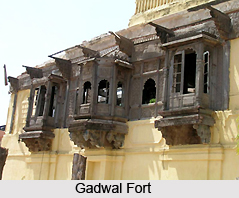 History of Mahbubnagar district is closely linked to that of the Telengana State as it forms a part of the same.
History of Mahbubnagar district is closely linked to that of the Telengana State as it forms a part of the same.
History of Mahbubnagar district says the glorious history of Satavahana Dynasty (221BC-218 AD), part of the Chalukyan Dynasty in South India (between 5th and 11th century AD) and in the recent history, it formed the core of the Golconda State and Hyderabad State, ruled by the Qutab Shahi Dynasty (1520-1687) and Asaf Jahi Dynasty (1724-1948) until it was taken over by New Delhi in 1948. This region became independent and joined democratic India on 18th September 1948.
Telangana State in India comprises 10 districts: Adilabad, Karimnagar, Nizamabad, Medak, Warangal, Khammam, Hyderabad, Rangareddy, Nalgonda, and Mahabubnagar districts.
Mahabunagar is a southern district of Hyderabad state under the Nizam of Hyderabad. It is bordered with Krishna River in the south and surrounded by the Nalgonda district, Hyderabad, Kurnool district, Raichur and Gulbarga district. This place was formerly known as Rukmammapeta and Palamooru.
The name was changed to Mahabubnagar on 4th December 1890, in honour of Mir Mahboob Ali Khan Asaf Jah VI, the Nizam of Hyderabad (1869-1911 AD). It has been the headquarters of the district since 1883 AD. The Mahabubnagar region was once known as Cholawadi or the land of the Cholas`. It is said that the famous Golconda diamonds including famous "Kohinoor" diamond came from Mahabubnagar district.
It is very hard to understand the history of Palamoor as this region was always neglected by the rulers. And for most of the time, this region was ruled by very small regional rulers, Samasthans, Jamindars, Doras or land lords. History of this region can be understood by the dynasties ruled this region as given below.
This region was southernmost land in the Ashoka`s Empire in 250 BC. Consequently it came under the rule of a number of dynasties including the Satavahana Dynasty (221BC-218 AD), Chalukya Dynasty in South India (between 5th and 11th century AD), Rashtrakutas Dynasty - Ruled for a brief period in 9th Century, Kakatiya Dynasty (1100-1474 AD), Bahamanis Dynasty (1347 - 1518), Qutab Shahi Dynasty (1518-1687). After the decline of the Qutab Shahi dynasty, Mughal rule was established over the region. Aurangzeb, the Mughal emperor, invaded Golconda in A.D.1687 and annexed it to the Mughal Empire. Since then, Golconda became part of the Deccan Subha and a Nizam was appointed as an agent of the Mughal emperor. Thus, for about a period of 35 years it was ruled by the Mughals, the last one being Mubariz Khan. Following this, the Nizam Shahi (Asif Jahi) dynasty came into prominence (1724-1948). This dynasty acquired enormous wealth and lived a most extravagant and lavish life for that time. Nizam VII was one of the richest men the world over at his time. He was also awarded as "Faithful Ally of British". The people of the land left behind a lot of well known landmarks, rich treasures, art, lavish food style and rich culture.



















